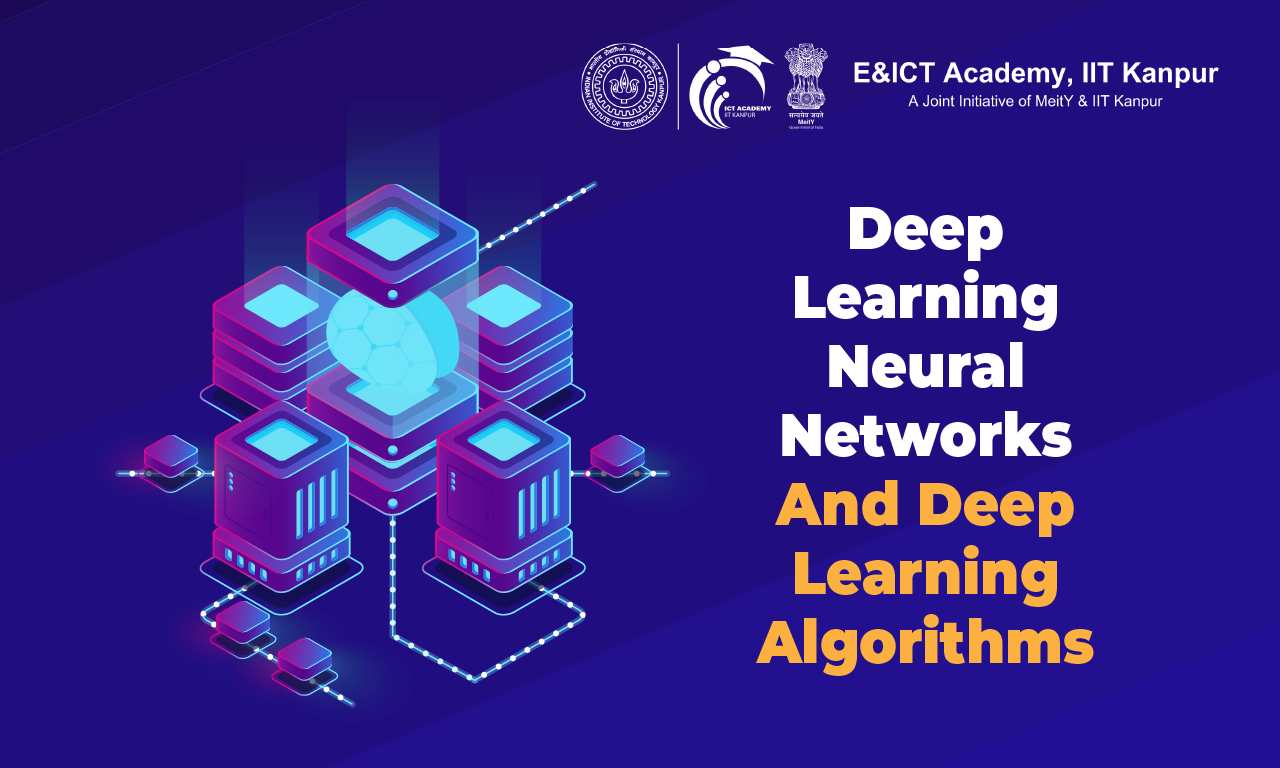Deep Learning: Neural Networks and Deep Learning Algorithms

In the area of artificial intelligence (AI), robots may be used to predict or foresee future patterns based on vast amounts of data. To create accurate judgments or predictions, artificial neural networks are taught utilizing deep learning algorithms through machine learning approaches.
Deep learning algorithms can automatically produce hierarchical representations of data that can comprehend minute patterns and enormous amounts of data, in contrast to typical machine learning algorithms, making this possible.
In order to boost productivity, deep learning is growing in popularity among programmers and developers. Voice-activated remote controls, virtual assistance, and futuristic products like self-driving automobiles are some of the technology’s main applications. To master these skills, consider enrolling in a machine learning course online.
High-performance computing requires a lot of processing power to manage the enormous amount of calculations it needs. Additionally, it is predicted that the market for deep learning chips will be valued over 21 billion USD by 2027.
Deep learning has sparked a lot of interest and gained general acceptance since it can perform at the leading edge in a range of sectors.
Importance and Applications of Deep Learning
Deep learning’s advent as a powerful technology has profoundly changed how difficult problems are solved across a variety of worldwide sectors.
- Deep learning has been applied to medical image analysis, disorder detection, and the discovery of novel treatments for already known diseases.
- Deep learning is used by financial institutions for automated trading, risk analysis, and fraud detection.
- Deep learning algorithms have demonstrated great performance in computer vision applications such as object identification, facial recognition, and image categorization, to name just a few.
Applications for natural language processing, such as sentiment analysis, language translation, and chatbots, have tremendously profited from deep learning approaches.
Neural Networks: Building Blocks of Deep Learning
Artificial Neurons (Perceptrons)
Synthetic neurons, also known as perceptrons, are the fundamental building blocks of neural networks. The output is produced by taking in the input signals, giving them weights, and transmitting the weighted total via an activation function.
Due to the nonlinearity introduced by activation functions, neural networks are able to learn complex correlations in the data. The activation functions sigmoid, hyperbolic tangent (tanh), and rectified linear unit (ReLU) are frequently employed.
At initialization, neurons are given random weights and biases; during training, these values are modified to improve the performance of the network.
Feedforward Neural Networks
An MLP (multilayer perceptron), often known as a feed-forward neural network, is the most common type of neural network used in deep learning.
These networks are made up of an input layer, an output layer, and one or more hidden layers. Moreover, numerous neurons coupled by weighted synapses make up each layer.
During forward propagation, the network receives the input data, and the activations of each layer are computed. The network’s output, which may be utilized for a number of tasks like classification and regression, is created by the last layer. You can use backpropagation techniques to modify the weights and biases of feedforward neural networks.
Backpropagation Algorithm
The backpropagation technique is essential for neural network training. It determines the network’s weights and biases in line with a certain loss function.
These gradients illustrate the size and direction of the adjustments required to lower loss and boost network effectiveness. Backpropagation propagates errors from the output layer back to the hidden layers while iteratively updating the weights and biases using gradient descent. When used in conjunction with stochastic gradient descent (SGD), a prominent optimization technique, backpropagation successfully updates the network’s parameters.
Deep Learning Architectures and Algorithms
Convolutional Neural Networks (CNN)
The CNNs were developed specifically for processing input that has a grid-like structure, like images.
CNNs use convolutional layers to glean regional patterns and traits from the input data. The convolutional operations carried out by these layers across the input are carried out by kernels or feature detectors—learnable filters.
Combining layers makes computation simpler since the retrieved attributes have fewer spatial dimensions. CNNs have profoundly altered computer vision tasks, enabling astounding improvements in object identification, classification, and image segmentation.
Recurrent Neural Networks (RNN)
Recurrent neural networks (RNNs) excel at processing sequential data since the order of the input components is crucial.
With RNNs you can discern temporal correlations because they maintain track of the memories of previous inputs in a hidden state. The vanishing gradient problem, on the other hand, affects standard RNNs and limits their ability to learn long-term dependencies.
Gating techniques are incorporated into specialized RNN variants like Long Short-Term Memory (LSTM) and Gated Recurrent Unit (GRU) to address this issue. Speech recognition, time series analysis, and natural language processing are all carried out using RNNs.
Generative Adversarial Networks (GAN)
Generative Adversarial Networks (GANs), a class of deep learning models, consist of a generator and a discriminator.
The generator seeks to produce artificial data that is comparable to the genuine data while the discriminator attempts to distinguish between real and fake data. GANs compete and iteratively improve the discriminator and generator in a min-max game. The success of GANs in tasks like image generation, style transfer, and data augmentation is astonishing.
Autoencoders
Autoencoders are unsupervised learning models that look for efficient representations of input data. They consist of an encoder network that converts the input to a lower-dimensional representation (encoding) and a decoder network that reconstructs the original input from the encoded form.
Conclusion
Deep learning has many advantages, including the ability to manage enormous amounts of data and achieve cutting-edge performance across a range of fields. However, there are certain challenges with deep learning, including the need for large datasets, processing capacity, and the interpretability of the trained models.
Because of ongoing research and cutting-edge technology, deep learning is still advancing swiftly. The focus is on enhanced architectures and algorithms, explainable AI, and addressing deep learning-related ethical concerns.
Deep learning has the ability to significantly alter industries. Numerous industries, including healthcare, banking, autonomous vehicles, computer vision, natural language processing, and many more, can benefit from deep learning algorithms’ capacity to extract practical insights and generate accurate forecasts.
Recommended Courses
.jpg)
Embedded System

Embedded Systems

Matlab and Simulink



